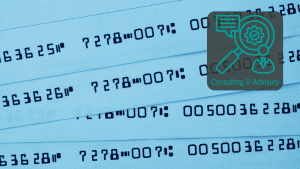LSL Webinar “Back to Basics | Put the Pieces Together: A Guide to Bank Reconciliations” presented by Louis Li and Riley Greenlee, CPA outlined the fundamentals of performing accurate and efficient bank reconciliations to streamline the process for local government finance departments.
In case you missed it – this article will help you prepare for your next audit with confidence by understanding what auditors look at to review your cash and bank reconciliations and ensure everything is in order before they arrive.
Whether you’re just starting out or need a quick reminder, feel free to bookmark, save, or print this post – it’s your checklist for what you’ll need to be prepared and tips to save.
Bank reconciliations are a critical part of maintaining accurate financial records in any local government finance department. They ensure that the cash recorded in your general ledger (GL) matches the balances in your bank accounts, thereby safeguarding your organization’s financial integrity. But what exactly do auditors look for when they review your cash and bank reconciliations? Understanding their process can help you prepare and avoid common pitfalls.
What Auditors Look at When Auditing Cash
- List of Bank Accounts and Statements
The first thing auditors will do is request a list of all your organization’s bank accounts, along with the final bank statement for the fiscal year being audited. This ensures that all accounts are included and that the general ledger (GL) balances are accurate. It also helps the auditor identify which accounts they need to confirm directly with the bank. - GASB 31 Fair Value Adjustment Entries
If your organization holds investment accounts, auditors will examine the GASB 31 fair value adjustment entries to ensure the fair value is correctly recorded in the GL. They will also verify that the footnotes in your financial statements accurately reflect these values. - Bank Balances
Auditors will typically select some, or in some cases all, of your bank accounts to confirm directly with the bank. This process is often done through platforms like confirmation.com and requires minimal effort from your organization. The auditors will prepare the necessary confirmation letters for your representative to sign, and the responses will be sent directly back to the auditors. - Bank Reconciliations
After confirming the bank balances, auditors will review your bank reconciliations. They will assess the timeliness of the reconciliations (usually within 30-60 days of month-end), ensure that all reconciliations are properly signed, and verify that the reconciled amounts match the GL and the bank statements. Additionally, they will test outstanding checks and deposits in transit and investigate all other unusual reconciling items.
Key Areas Auditors Focus On
- Timeliness: Bank reconciliations should be prepared within 30-60 days of month-end. Delays can signal potential issues in your controls and may lead to findings in the audit report even if caught up at the end of the year
- Signatures: Auditors will check that all bank reconciliations are signed by both the preparer and an approver, ensuring that proper oversight is in place.
- Accuracy: The reconciled amounts must match the GL. Any discrepancies indicate that cash has not been fully reconciled, which could lead to audit findings.
- Testing Reconciling Items: Auditors will review subsequent bank statements to verify that all outstanding checks have cleared and deposits in transit have been processed. They will also scrutinize any unusual or other reconciling items, requiring explanations for these.
Preparing for the Audit
To ensure a smooth audit process, finance departments should:
- Prepare a List of Bank Accounts: Include all balances and ensure they reconcile to your GL accounts.
- Provide Year-End Bank Statements: Include statements for the fiscal year-end and the subsequent month to facilitate testing of reconciling items.
- Prepare Year-End Bank Reconciliations: Ensure all key points, such as timeliness, signatures, and accuracy, are met. Be ready to explain any reconciling items other than outstanding checks or deposits in transit.
Common Mistakes and Questions
- Miscommunication: Ensure clear communication between departments to avoid discrepancies in reconciliations.
- Delayed Reconciliations: Reconciliations delayed beyond 60 days can lead to audit findings, even if they are caught up by year-end.
- Interest Allocation Errors: Be cautious with pooled cash systems, ensuring interest is allocated correctly and negative cash balances are not incorrectly allocated interest revenue.
Two common questions often arise:
- Do Fair Value Adjustment Entries Always Need to Be Recorded?
Yes, according to GAAP. However, if the difference is immaterial, you might consider skipping it, but be prepared to justify this decision to your auditors. - What If Items Don’t Clear Immediately?
Amounts that don’t clear immediately should be identified and tracked. It’s essential to monitor these items and have a plan for resolving them.
By understanding the auditors’ perspective and taking proactive steps to prepare, your organization can ensure that the audit process goes smoothly, minimizing the risk of findings and ensuring the integrity of your financial records.
If you need more guidance on what you need to get started, how to calculate figures, and the common mistakes to avoid – check out our blog ‘Put the Pieces Together: Step-by-step to Bank Reconciliations’.




